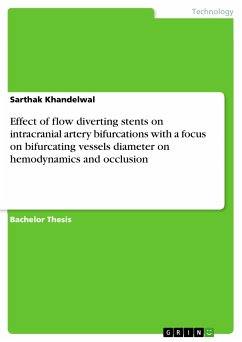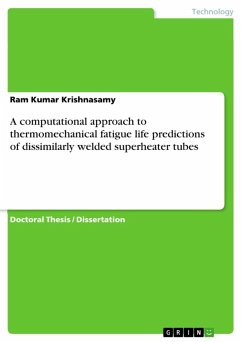Bachelor Thesis from the year 2015 in the subject Engineering - Mechanical Engineering, grade: 69%, University of Sheffield, language: English, abstract: An intracranial aneurysm is a vascular disorder estimated to affect up to 5% of the global population. The use of flow diverting stents for treatment of intracranial aneurysms leads to ischemic complications. It is hypothesized that alteration in hemodynamics after placement of stents plays a vital role in ischemia (vessel occlusion). This project uses Computational Fluid Dynamics to study the alterations in hemodynamics before and after placement of stent with respect to the relative diameter of the bifurcating arteries on idealized geometries using ANSYS-CFX 15.0. Pressure and flow rate waveforms were extracted from a 1D model of the arterial tree to simulate hemodynamic conditions correctly. The results show that there are significant changes in hemodynamics (pressure and wall shear stress) before and after placement of stent. These changes are also affected by the relative diameters of the bifurcating arteries. The trends observed in hemodynamics can be interpreted by clinicians to study vessel occlusion and its relation to the relative diameters of arteries. The results have a potential to assist in treatment of aneurysms without ischemic complications.
Dieser Download kann aus rechtlichen Gründen nur mit Rechnungsadresse in A, B, BG, CY, CZ, D, DK, EW, E, FIN, F, GR, HR, H, IRL, I, LT, L, LR, M, NL, PL, P, R, S, SLO, SK ausgeliefert werden.









